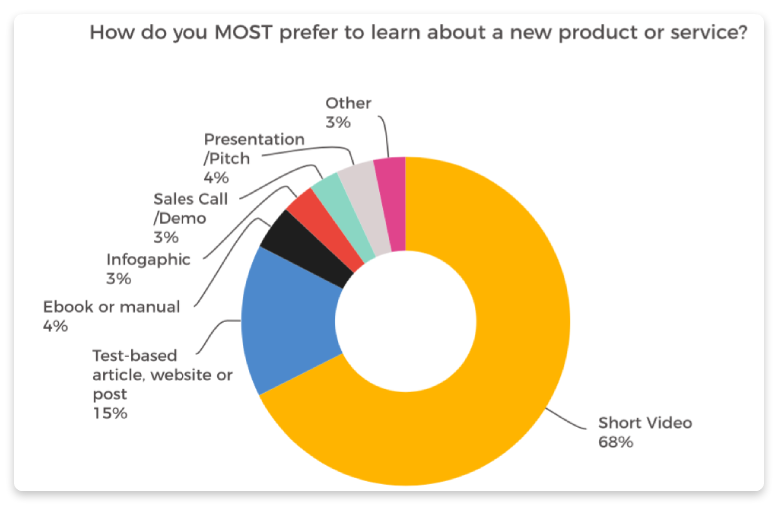Email marketing remains a powerful tool for businesses. It connects brands with their audience effectively.
In today’s digital age, email marketing is more important than ever. Businesses rely on it to reach customers, boost sales, and build relationships. But how effective is email marketing really? That’s where email marketing statistics come in. These numbers provide insights into open rates, click-through rates, and overall effectiveness.
Understanding these statistics helps businesses refine their strategies. It also reveals trends and preferences among consumers. Whether you’re a seasoned marketer or new to the game, knowing these stats can guide your decisions. Stay tuned as we dive into the key email marketing statistics you need to know.
Table of Contents
Introduction To Email Marketing Statistics
Email marketing remains a powerful tool for businesses. With its ability to reach customers directly, it can boost engagement and sales. But how can marketers ensure their email campaigns are effective? This is where email marketing statistics come in.
Importance Of Data In Email Marketing
Data helps marketers understand their audience better. Knowing open rates, click-through rates, and conversion rates is crucial. These metrics offer insights into what works and what doesn’t. Without data, marketers would be guessing. Using data ensures campaigns are targeted and effective.
How Statistics Can Improve Campaigns
Statistics provide a clear picture of campaign performance. By analyzing data, marketers can see which emails perform best. They can identify trends and patterns. This helps in crafting better content. It also aids in segmenting the audience. Targeted emails are more likely to be opened and read.
Understanding statistics helps in A/B testing. Marketers can test different subject lines and content. They can see which version gets better results. This leads to continuous improvement. Better campaigns result in higher engagement and conversions.

Credit: snov.io
Open Rates
Understanding email open rates is crucial for assessing the success of your email marketing campaigns. Open rates represent the percentage of recipients who open your email. It is a key metric that reflects how well your subject lines and sender names attract attention. Let’s delve deeper into open rates by examining average open rates by industry and the factors that affect them.
Average Open Rates By Industry
Open rates can vary significantly across different industries. Here’s a look at some average open rates by industry:
| Industry | Average Open Rate |
|---|---|
| Healthcare | 22.43% |
| Education | 25.13% |
| Retail | 18.39% |
| Finance | 21.56% |
| Technology | 19.84% |
These numbers highlight how different sectors experience varying levels of engagement. Knowing the average open rates in your industry can help you set realistic benchmarks for your email campaigns.
Factors Affecting Open Rates
Several factors influence whether recipients will open your emails:
- Subject Line: A compelling subject line can greatly impact open rates. Keep it short and relevant.
- Sender Name: Use a recognizable sender name. It builds trust and encourages opens.
- Timing: Send emails at optimal times. Study your audience to find the best times to reach them.
- Personalization: Personalized emails often see higher open rates. Use the recipient’s name and tailor content to their interests.
- List Quality: Clean and updated email lists ensure higher engagement. Remove inactive subscribers regularly.
By understanding and optimizing these factors, you can improve your email open rates and enhance your overall email marketing performance.
Click-through Rates
Click-through rates are crucial for email marketing success. They measure the percentage of recipients who click on links within an email. This metric helps gauge engagement and campaign effectiveness. Understanding and improving click-through rates can lead to better results.
Impact On Engagement
High click-through rates indicate strong audience interest. Engaged subscribers are more likely to convert. This leads to higher sales and better ROI. Monitoring click-through rates helps refine strategies. Adjusting content based on these insights boosts engagement.
Improving Click-through Rates
Craft compelling subject lines to increase open rates. Use clear and concise language. Personalize emails to make them relevant to the reader. Include strong calls-to-action. Ensure links are easy to find and click. Test different elements to see what works best. Analyze the results and make necessary adjustments.
Optimize email design for mobile devices. Many users check emails on their phones. A mobile-friendly design improves the user experience. This, in turn, can boost click-through rates. Pay attention to the timing of your emails. Sending them at the right time increases the chance of clicks.
Conversion Rates
Email marketing statistics show that higher conversion rates can be achieved with personalized content. Engaging subject lines also boost open rates significantly.
Email marketing remains one of the most effective digital marketing strategies. Conversion rates play a crucial role in measuring its success. Understanding how well your emails convert recipients into customers can enhance your marketing efforts. This section will delve into the statistics and strategies to improve your email marketing conversion rates.Tracking Conversions
Tracking conversions is essential for any email marketing campaign. Use tools like Google Analytics to monitor user actions. These tools help you see which emails drive the most conversions. UTM parameters can track the source, medium, and campaign name. This data helps refine your strategies. Analyzing this data reveals patterns. You can identify which type of content works best. For example, emails with clear calls-to-action may convert better. Regularly reviewing conversion rates helps you stay on top of your game.Boosting Conversion Rates
Boosting conversion rates requires a strategic approach. Start by segmenting your email list. Tailored messages resonate better with specific audiences. Personalization also plays a vital role. Use the recipient’s name and relevant information to make the email more engaging. Content is king. Ensure your emails offer value. Share insights, tips, or special offers. Use compelling subject lines to increase open rates. A/B testing different elements of your emails can reveal what works best. Another key factor is mobile optimization. Many users open emails on their phones. Ensure your emails look good on all devices. Use responsive design and concise text. Finally, include clear and compelling calls-to-action. Make it easy for recipients to take the next step. Whether it’s making a purchase, signing up, or downloading content. A well-crafted call-to-action can significantly improve your conversion rates. “`Unsubscribe Rates
Email marketing is a powerful tool. Yet, unsubscribe rates can be a concern. Keeping subscribers engaged is key to a successful email campaign. Let’s explore common causes and ways to reduce unsubscribe rates.
Common Causes
Understanding why people unsubscribe helps improve email strategies. Here are some common reasons:
- Irrelevant Content: Emails that do not match subscriber interests.
- Too Frequent: Sending emails too often can overwhelm subscribers.
- Poor Design: Emails that are hard to read or navigate.
- Spammy Feel: Emails that look like spam or contain too many promotional links.
- No Value: Emails that do not provide useful information.
Reducing Unsubscribe Rates
Lowering unsubscribe rates is vital for maintaining a healthy email list. Follow these steps:
- Segment Your List: Group subscribers based on interests. Send targeted emails to each group.
- Personalize Content: Use subscriber names and tailor content to their preferences.
- Optimize Frequency: Find a balance in how often you send emails. Test different frequencies to see what works best.
- Improve Design: Make your emails visually appealing. Ensure they are mobile-friendly.
- Provide Value: Share useful information. Include tips, guides, and exclusive offers.
A well-planned email strategy can keep your audience engaged. Lower unsubscribe rates help maintain a strong connection with subscribers.

Credit: www.hustlermarketing.com
Email Personalization
Email personalization is a crucial strategy in modern email marketing. It involves tailoring email content to suit the preferences and behaviors of individual recipients. This approach enhances engagement, boosts open rates, and drives conversions. By personalizing emails, marketers can create a more meaningful connection with their audience.
Personalization Techniques
There are several techniques to personalize emails effectively:
- Use recipient’s name: Start emails with the subscriber’s name.
- Segment your audience: Group subscribers based on interests or behaviors.
- Behavioral triggers: Send emails based on user actions, like purchases or clicks.
- Dynamic content: Change email content based on user data.
- Personalized recommendations: Suggest products or services based on past behavior.
Benefits Of Personalization
Personalizing emails offers numerous benefits:
- Increased open rates: Personalized subject lines can boost open rates.
- Higher click-through rates: Relevant content encourages more clicks.
- Improved customer experience: Tailored messages make recipients feel valued.
- Better conversion rates: Personalized emails can lead to more sales.
- Enhanced loyalty: Subscribers are more likely to stay loyal to brands that understand them.
For instance, a study by Experian found that personalized emails deliver 6x higher transaction rates. Another report by Statista revealed that 72% of consumers only engage with personalized messaging.
In conclusion, email personalization is not just a trend. It is a necessity in today’s competitive market.
Mobile Optimization
In today’s digital world, mobile optimization is crucial for email marketing. With more users accessing emails on their smartphones, ensuring your emails are mobile-friendly can significantly impact your campaign’s success.
Importance Of Mobile-friendly Emails
More than 60% of email opens happen on mobile devices. This statistic highlights the importance of mobile-friendly emails. If your emails are not optimized for mobile, you risk losing a large audience. Mobile users expect seamless experiences. Poorly formatted emails can lead to higher bounce rates and lower engagement.
| Statistic | Detail |
|---|---|
| Email Opens on Mobile | 60%+ |
| Expected Experience | Seamless |
| Impact of Poor Formatting | Higher Bounce Rates |
Design Tips For Mobile
Designing for mobile involves several key strategies. These ensure your emails are easy to read and interact with on smaller screens.
- Use a single-column layout: This format is easier to read on mobile devices.
- Keep your content concise: Mobile users prefer short, direct messages.
- Optimize images: Use smaller, compressed images to reduce load times.
- Increase font size: Make text readable without zooming in.
- Use large, tappable buttons: Ensure clickable elements are easy to tap on small screens.
By following these tips, you can create engaging mobile-friendly emails. They will enhance user experience and improve your email marketing results.
Email Timing
Email timing plays a crucial role in the success of your email marketing campaigns. Sending emails at the right moment can significantly increase open and click-through rates. Understanding the best times to send emails and basing your timing on audience behavior can make a big difference.
Best Times To Send Emails
Studies show that specific times of the day can lead to higher engagement. Early mornings, around 9 AM, are often effective. People check their emails as they start their day. Mid-afternoon, around 2 PM, is another good time. Many take a break and catch up on emails.
Late afternoons, around 4 PM, can also work well. People check their emails before leaving work. Avoid sending emails late at night. Most people are not active during those hours.
Timing Based On Audience Behavior
Audience behavior can vary. Analyzing your audience’s habits can help you choose the best time. For instance, if your audience includes working professionals, weekdays might be better. If your audience consists of younger people, evenings or weekends might be more effective.
Use data from past campaigns. Look at open and click-through rates. Adjust your timing accordingly. Testing different times can help you find the sweet spot for your audience.
Remember, what works for one group may not work for another. Tailoring your approach can lead to better results.
A/b Testing
A/B testing is a powerful tool in email marketing. It helps you understand what works best for your audience. By comparing two versions of an email, you can see which one performs better. This practice can lead to higher engagement and conversions.
Effective A/b Test Strategies
Start by testing one element at a time. Focus on subject lines, call-to-action buttons, or images. Keep the changes small to see clear results. Use a significant sample size for accurate data.
Timing is also crucial. Send your emails at different times of the day. Analyze which time gets more opens and clicks. Consistency is key. Run your tests for the same duration to ensure fair comparison.
Test different email formats. Try plain text versus HTML. Compare single-column versus multi-column layouts. These strategies can help identify the best format for your audience.
Analyzing A/b Test Results
Look at open rates first. A higher open rate indicates a better subject line. Next, check the click-through rates. This shows if your content is engaging.
Track conversion rates. This reveals if your email leads to desired actions. Use heatmaps to see where users click. This can help improve future email designs.
Compare the performance metrics of both versions. Identify patterns and learn from them. Use these insights to refine your email marketing strategy. Regular A/B testing can lead to continuous improvement.

Credit: optinmonster.com
Frequently Asked Questions
What Are The Benefits Of Email Marketing?
Email marketing increases customer engagement and drives sales. It’s cost-effective and easy to track.
How Effective Is Email Marketing?
Email marketing is highly effective. It offers an average ROI of $42 for every $1 spent.
What Is The Average Email Open Rate?
The average email open rate is around 20%. It varies by industry.
How Can I Improve My Email Open Rates?
Use engaging subject lines. Personalize content. Send at optimal times.
What Is A Good Click-through Rate For Emails?
A good click-through rate is around 2-5%. It depends on your industry.
How Often Should I Send Marketing Emails?
Send marketing emails 1-2 times per week. Avoid overloading your subscribers.
What Is Email Segmentation?
Email segmentation involves dividing your email list into smaller groups. It’s based on specific criteria.
What Are The Key Email Marketing Metrics?
Key metrics include open rate, click-through rate, conversion rate, and unsubscribe rate.
Conclusion
Email marketing remains a powerful tool. Its effectiveness is backed by data. Statistics show high open rates and impressive ROI. This method connects businesses with their audiences. Email campaigns drive customer engagement and sales. Regularly analyze your email performance. Adapt strategies based on insights.
Keep messages clear and relevant. Email marketing offers great potential. Embrace its benefits for business growth. Stay informed on the latest trends. Happy emailing!







